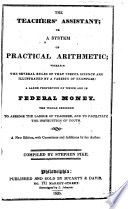 | Stephen Pike - Arithmetic - 1835 - 210 pages
...are; and if the third term consist of several denominations, reduce it to its lowest denomination; then, Multiply the second and third terms together,...divide the product by the first term: the quotient will je the answer. Note. — The product of the second and third termsis of he same denomination as the... | |
 | Francis Walkingame - 1835 - 270 pages
...proportion, if necessary, to the same name, and the third to the lowest denomination mentioned in it, then multiply the second and third terms together, and divide the product by the first; the quotient will be the answer to the question in the same denomination the third term was reduced... | |
 | Francis Lieber, Edward Wigglesworth - Encyclopedias and dictionaries - 1835 - 624 pages
...less, place the greater of these two terms on the left, and the less in the middle ; and in both cases, multiply the second and third terms together, and divide the product by the first term for the answer, which will always be of the same denomination as the third term.— Note 1. If the... | |
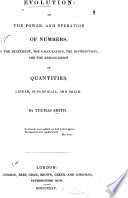 | Thomas Smith (of Liverpool.) - Arithmetic - 1835 - 180 pages
...made it fifteen times too large, divide it by this 15; that is to say, we have the same result if we multiply the second and third terms together, and divide the product by the first. AND THIS is THE RULE ; this, when the terms are properly placed, this MULTIPLYING THE SECOND AND THE... | |
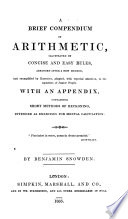 | Benjamin Snowden - 1835 - 108 pages
...RULE OF THREE DIRECT. NOTE 1. — Make a stating, and, as in whole numbers, multiply the 2nd and 3rd terms together, and divide the product by the first term, the quotient will be a fraction of the same name as the middle term, and will generally require to be reduced. Examples.... | |
 | A. Turnbull - Arithmetic - 1836 - 368 pages
...larger of the proportionate terms first. 584. Having stated the question agreeably to these directions, then multiply the second and third terms together, and divide the product by the first ; and the quotient will be the fourth term, which will of course he of the same denomination as the... | |
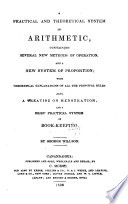 | George Willson - Arithmetic - 1836 - 202 pages
...mentioned in it.* * It is often better to reduce the lower denominations to the decimal of the highest. 3. Multiply the second and third terms together, and divide the product by the first, and the quotient will be the answer, in that denomination which the third term was left in. In arranging... | |
 | Peirpont Edward Bates Botham - Arithmetic - 1837 - 252 pages
...question. The first and third terms must be of one name. The second term of -divers denominations. Multiply the second and third terms together, and...divide the product by the first term ; the quotient thence arising will be the Answer. OBS. This rule is founded on the obvious principle, that the magnitude... | |
 | Abel Flint - Geometry - 1837 - 338 pages
...is calculated accordingly. GENERAL ROLE. 1. State the question in every case, as already taught : 2. Multiply the second and third terms together, and divide the product by the first. The manner of taking natural sines and tangents from the tables, is the same as for logarithmic sines... | |
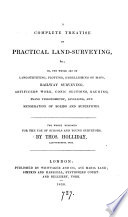 | Thomas Holliday - Surveying - 1838 - 404 pages
...3.—By arithmetical computation. Having stated the question according to the proper rule or case, multiply the second and third terms together and divide the product by the first, and the quotient will be the fourth term required for the natural number. But in working by logarithms,... | |
| |